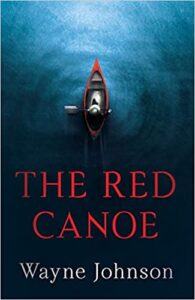[ad_1]
crime fiction, what is it, anyway? And how can it be spun out of sources as divergent as both retiring old ladies knitting charmingly dumpy cardigans and perversely wrong-headed but wholly sympathetic psychopaths? Regarding the corpus of crime writing, it might seem the only common element in these narratives is that a crime is or has been committed. One which begs redress—be that through the full force of justice or simply the reader’s disapprobation, granted not even the apprehension of murderers here is a given.

Look a little deeper, though—and far broader—and one can see the entirety of crime writing falling into either of two camps, each evolving out of sources that, for the most part, don’t cross over.
Paramount examples of these camps of crime fiction can be found in the novels of Agatha Christie—and of Patricia Highsmith.
Having enjoyed both greatly, I would argue that, while Christie and Highsmith both provide pleasures, they do so in significantly different ways, and from different sources—let’s even say the two writers work out of radically different DNA, and writers as well as readers of crime fiction would best be aware of that fact.
Christie’s DNA has its source in Poe’s “stories of ratiocination,” and seminally in the character of his Inspector Dupin, who through a detached and cool contemplation works the case of “The Murders in the Rue Morgue.” Out of the incomprehensible facts, which on the surface would seem to the reader “impossible” to explain, Dupin solves the puzzle. He puts the world right again, here resolving for the reader the tension created in the otherwise inexplicable. He makes sense out of non-sense, thus satisfying a fundamental drive all readers share, which is to comprehend the larger meaning of the facts of any story. Writers in Christie’s camp most assiduously develop a “noetic thread,” and to an exact and ultimate meaning. Christie, in the bulk of her narratives (there were thirty-three Poirots), first introduces the reader to a group of individuals forced by circumstances to close interaction, most of these individuals variations of types. A murder, or murders, take place (“Murder becomes a habit,” says her sleuth, Poirot). As written, any of the individuals in Christie’s dramas could have committed the murder, or then—murders. Christie brings her sleuth in late (in person, or in action) and only after the reader is thoroughly flummoxed by her cast of murder-motivated suspects. Following an engaged consideration of all the “facts” of the case through her sleuth, the murderer is revealed—even when he or she—or it—is as preposterous as an orangutan (as in Poe’s “The Murders in the Rue Morgue”).
It is most instructive to note that the first murderer in the lineage of ratiocination is an absurdity.
And why is this important? Because, even granted the plot is ridiculous—an orangutan, having escaped its seaman owner, enters an apartment via the chimney and kills the apartment’s two occupants—and beyond unlikely—the story still delivers its pleasures. Through it, the reader is transported, however briefly, into the rarified air of mystery and murder.
How could the murderer have gained entrance to the apartment when the doors and windows were locked? the reader is compelled to ask. Why was this murder committed? And by whom?
It is for this reason, the writer’s having created in the reader a profound need to understand what the real story is, that we forgive a whole host fairly preposterous solutions—whether we like it or not, when the sleuth has finally properly assembled the pieces of the puzzle so we can see the picture in its entirety, we have arrived. Even if, in the first instance of this kind of wildly popular story, we have arrived at a murdering orangutan.
In Christie’s Murder in Mesopotamia, for example, we are to believe that a supremely seductive, controlling, and intelligent woman would earlier have given up her husband as a German spy to be rid of him and, following meeting this same man again, though he having “remade” himself in the intervening twenty years they’d been separated—would marry him a second time, never having recognized him as her first husband.
Preposterous? Certainly, but this second husband’s identity we don’t discover until the end of the story, after having enjoyed trying to make sense of Christie’s usual cast of possible perpetrators.
Do we care that Christie’s plot is preposterous? Not really. Because, even while there might be a bit of lip curling at the reveal (as also with the reveals in her novels The ABC Murders and A Pocket Full of Rye, etc.), the puzzle has been solved and the pleasure in this sort of story delivered.
Most important here, though, is a consideration of why these kinds of (more artificial than drawn from life) stories work, which is that they are altogether obvious fabrications. Baubles, for our entertainment. Even the titles of such works suggest fabrication: they’re jingles: Murder in Mesopotamia. Note any and all of the Erle Stanley Gardners: The Case of the Lucky Legs; The Case of the Borrowed Brunette; The Case of the Crooked Candle. Likewise, Grafton’s Kinsey Milhone series. A is for Alibi, and so on. The titles alone advertise overt artifice.
And these stories deliver on it, out of the tradition of like narratives. We enjoy the lot of it, consequently—at a comfortable—hence “cozy”—distance. Cozy does not mean laced doilies and postcard pretty settings and sentimentality. Cozy is psychic distance, a safe, comfortable place from which the reader experiences the actions of the story. It is not necessarily “cuteness,” too-sweet little towns in Wyoming (or remote post-card quaint villages in Quebec); it is not too-singularly good people doing battle with too-singularly evil villains.
All of the works in the lineage of ratiocination, of Poe, have this specific aspect about them. From the first, they call the reader’s attention to the artifice of the story, engaging the reader at the level of thinking. Even the names of the writer’s sleuths become critical here. Take for example Dennis Lehane’s Kenzie and Gennaro—the K in Kenzie and G in Gennaro being nearly alliterative—which, again, signals artifice. The same goes for Grafton’s Kinsey Millhone, a near beer jingle of a name for a perky, plucky, and playful protagonist. (For contrast, consider Highsmith’s Tom Ripley, of whom more will be said.) In structure overall, the ratiocination puzzle form can be overt, or hidden. Either way, in this lineage the form dominates. For example, in nearly all of Christie’s stories there is an overt use of time lines—so and so was on the roof from 10:20 to 10:50, etc., when the murder occurred between 10:45 and 11:00. Could the murderer have struck that quickly and returned to the roof? Wouldn’t he have been seen by the archaeologist’s assistant, who was nearby from 10:30 until noon? In stories of ratiocination, artifice is everywhere.
There are bottles of poison, thrown into rivers, or hidden, or moved about. There are (oh-so-coincidental) conversations overhead—“You do see, don’t you, that she’s got to be killed.” “It’s Horrible.” “It’s not more horrible than this!” There are Dictaphones used by suspects and guns conveniently kicked under davenports.
Critical to the functioning, though, of any story written in this lineage, is the reader’s certainty that the man of reason, the sleuth or detective, will arrive in the midst of the ever-thickening and incomprehensible situation.
Cool-headed, not personally involved (rarely is there much character development here) the sleuth is a filter for the reader. The sleuth rarely—other than sentimentally—emotes. And if the sleuth does, due to the artifice of the story, the reader experiences it as something observed.
The reader is emotionally detached—experiencing the story through the sleuth, who, employing his or her most superior “little grey cells”—gives order to what has been chaos.
The sleuth, by design, sees what the reader has not or cannot.
As remarks Poirot to his sidekick, Hastings, in The ABC Murders, “Did I not say to you once that you had a genius for stating the obvious? It is the obvious that I have neglected.”
This “hiding the obvious in plain sight” is a sleight of hand trick on the part of the writer. All murders in Christie are contemplated, planned, and painstakingly executed (pun intended).
In stories of ratiocination, time and again we’re being led down a garden path and enjoying it, and in part because it is all a construct. Writers in this lineage most carefully withhold information, only giving the reader fragments of greater meanings, and often sans context. Logisticians have long commented that, while it may appear the reader can through the “facts” of things in Christie’s stories ascertain the identity of her murderers prior to her typical reveal—now much comically dated and charming—such is not the case. Christie resorts, and some would contend far too often, on devices, one such example being the classical character shift, wherein information wholly outside the story enters it only at the moment of its resolution—as when the reader discovers, in Murder in Mesopotamia, that the Swedish archeologist Dr. Leidner is in reality none other than Frederick Bosner, the victim’s first husband.
Poirot, through his superior powers of observation and deduction, ferrets out this fact for us.
Again, plausibility is not critical here. Poirot, who speaks two languages could, theoretically, have long before sensed something amiss in Leidner’s lack of an accent, or in some verbal misstep he would, in reality, have indubitably made.
That none of this is an impediment to the enjoyment of the story is instructive.
Certainly, some stories in this lineage are more true to life than others—but when we all too well know the murderer might be an orangutan—or a man once married to the murder victim and not recognized?
Notice, again, the function of the form: Up front, the usual and intriguing human social interaction while lurking under it are skullduggery, lying, and posturing for the purposes of manipulation. And Christie is a master at thumbnail sketches of posturing, here and there addressing greed (the English do love their stories having to do with inheritances) and ambition.
In a Christie story, first and foremost the reader encounters a swirl of potent and potentially lethal interactions between characters—all of them having deeper meanings, ones the sleuth will—eventually—reveal to us. At which time, the mystery (or crime) will be solved—and in Christie’s case, to boot, many of her lonely-hearted couples will be paired, even married as an end note.
All of this is entertainment, but at a great psychic distance. These stories are about the larger human story—not of it. All is witnessed at a safe remove. We might metaphorically bite our nails a bit, but we’re not dropped into a sometimes eviscerating murk of human suffering and meaning—because in this lineage of crime fiction, even the irrational is subsumed by the larger and entirely comprehensible meaning: As in a Venn diagram, the irrational is contained within the soon to be entirely comprehensible (rational) story.
Readers, a billion in the English speaking world, and another billion elsewhere, find Christie’s narratives supremely entertaining.
Christie did at times work at a lesser psychic distance—as in And Then There Were None, which, she claimed, was the most difficult to write. But in it she resorted to an artificial construct, the fulfillment of her murders in the order of a children’s rhyme, putting artifice at the fore, so again making of her story a puzzle—something to be experienced at a distance.
Not surprisingly, then, granted they are quintessential cozies, the Poirots and Marples have done the most business. (Doyle’s work, since I feel I must mention it, is cut from the same cloth—though Holmes is a more tetchy, acerbic, and difficult character than either Poirot or Marple.)
***
Patricia Highsmith, as did Christie, wrote of murders and murderers, but Highsmith’s entry point, unlike Christie’s, is always psychological, and at the confluence of human interactions—ones lethal in their alchemy. These pairings hatch unforeseen and dark things: There is not a cool, planned, and well-orchestrated murder in Highsmith. And, always, with Highsmith, the reader comes to intuit the inevitable and so dread it. (Graham Greene, who much admired Highsmith’s writing, dubbed her “the poet of apprehension.”)
For example, in Strangers on a Train, architect Guy Haines is suffering over his unfaithful wife, and longing to be with his true beloved. He’s traveling on business and, by coincidence, shares his story—in the privacy of a rail compartment—with Charles Anthony Bruno, a playboy psychopath who offers to knock off Haines’ wife—but in an exchange. Bruno will take care of Guy’s wife. Guy will do away with Bruno’s much hated father. It’s all venting. And who hasn’t, when sufficiently pressured, when given the opportunity, vented? Who hasn’t—in those years of random travel—crossed some vast space and struck up a conversation with a stranger to pass the time? And what becomes of our shared confidences? Usually nothing, granted, at some point, we part ways with our ersatz confidante and such conversation is relegated to, at the most, vague memory.
Here, though, at the onset of the story, Bruno insinuates himself on Guy, proposing something preposterous. Is it just a joke? “Just talk” to pass the time? Guy is tired and upset. Why not blow off some steam? And here the reader encounters a trope much plumbed by Highsmith: The impactful, seemingly-coincidental-event that life often turns on. Certainly, in the heat of an angry venting, it would seem Guy wants his wife dead. The exchange Bruno suggests is likewise preposterous. Only, later, when Guy is away in Mexico, Bruno kills Guy’s wife, leaving Guy to fulfill his end of the bargain. Fearing a charge of complicity from Bruno in the murder, Guy doesn’t inform the police. Which, in turn, creates leverage for Bruno, who, after, wages an all out psychopathic campaign against Guy, Guy with each step further miring himself in the insanity of the situation. That is, until out of desperation he kills Bruno’s father to get free of Bruno.
At this point, were this a story in the tradition of ratiocination, in would come the sleuth (or detective)—the facts of the case would be taken stock of: Who was on the train and when? When was Guy in Mexico and where was Bruno at the time? What resources did Bruno’s father have? Was there an inheritance to be had?
But this is not what Highsmith does—in Highsmith’s work there is no filter, and no sleuth.
Here there is no solving of the murder through a process of ratiocination, no clever children’s rhymes or tampered-with sleeping draughts.
Guy is drawn deeply into his guilt, wherein he suffers innumerable torments—as would most “rational” people having erred so deeply as to be wedded in crime to a psychopath such as Bruno. We suffer with Guy, and not at a distance. There is the continual torment of Guy’s possibly being “found out.” Our sympathies are entirely with Guy, flawed and failing as he is. After all, what did Guy do to initiate this nightmare he (and the reader) finds himself in?
Finally, unable to contain his guilt Guy confesses, though to a friend who, ironically enough, is understanding—only an investigating detective overhears their conversation and is not.
In Strangers On A Train, it is not the pressure of a sleuth such as Poirot that brings about the long-waited-for resolution of the story; rather, it is the functioning of a tormented conscience. Guy confesses, though that confession is motivated by his incapacity to live with what he’s done.
If all that sounds vaguely familiar, it is. Highsmith, in Strangers on a Train, repurposed the plot of Dostoyevsky’s novel crime and Punishment, a book she much admired. This then, not ratiocination, is the DNA from which come all Highsmith’s novels. Highsmith’s movement, unlike that in stories of ratiocination, is always away from the assumption of every day order and meaning. There be dragons lurking in Highsmith’s depths, and she brings them out into the daylight, where, oftentimes altogether mesmerized by them, we can’t help but watch and even empathize, and at times even wish for Highsmith’s oh-so-human perpetrators of crimes to escape punishment.
After all, we’re not all that unlike them.
Not so much unlike ex-student Raskolnikov in crime and Punishment, who, initially, fashions rational arguments to give reason to his far baser motivations. He is resentful. Jealous. Entitled. Frustrated. Fit for far greater things, he tells himself. He is noble in his thinking. And in his thinking the world would be far better off without the old woman pawnbroker he has come to know, this everyday chiseler becoming for Raskolnikov the very emblem of evil in the world. The very evil in himself that he cannot, in all his defensive self-flattery, see. He’s poor. Without much future. A failed student. Yet, what good he could do with the old lady’s resources! he tells himself. With her money he could show the world his true, most-noble nature.
Up front, all is reason. For an argument to have logical coherence, the elements of the premise need only build on each other. All kings of Finland are bald. Adolf is a King of Finland. Therefore: Adolf is bald. But there is no king of Finland. And so work the minds of Highsmith’s characters—they all have their reasons, an almost impenetrable layer of rectitude under which the darkest motivations lurk.
Down comes Raskolnikov’s axe. Dead is the pawnbroker—but so is her half-sister, who’s had the ill-fortune to be present, too.
What ensues in crime and Punishment is not a search for a murderer by a cool-headed sleuth, as in stories of ratiocination, but a progressively desperate search for exculpation on the part of the perpetrator of the crime, Raskolnikov—which Raskolnikov can only find by bringing his true actions out into the light where they can be seen—by himself and others—by confessing.
Here the resolution is one wholly psychological—the return to tonic, as in a musical piece, is to psychological wholeness.
Forced into hiding in plain sight, Raskolnikov discovers he cannot live with the cognitive dissonance in his tortured, ever turning mind; he can’t bear not being known for who he truly is:
A murderer, and not a noble one.
Most, if not all, Highsmith’s protagonists are in hiding, too, and not just from society at large, but also from themselves. This close-in, almost total collapse of psychic distance can sometimes have an almost nauseating effect on the reader. Highsmith’s are stories of psychological train wrecks, ones that don’t end at the crash. Initially we are drawn into her characters’ lives where we find them, almost against our will, sympathetic—even while from the first the inevitable homicidal outcome is building, but under the surface. As with Guy, in Strangers on a Train; so too Tom Ripley, in The Talented Mr. Ripley (who murders to be a part of a life he can’t be part of, not being born to it); and Walter Stackhouse, in The Blunderer. All are driven by powerful inner forces to murder.
There is not, to my knowledge, one instance in Highsmith of a cold, calculating murderer after something as banal as an inheritance, as in Christie’s A Pocketful of Rye, wherein Lance, one of two brothers, the “bad” brother, happily kills, and many times, for just that.
A common lament of Christie’s characters is—“Where will I get my money?” Might they consider, god help them, work?
A superlative example of Highsmith’s close in rendering of a character leaning toward homicide can be found in Vic Van Allen in Deep Water. Here the reader is placed deeply in Vic’s world, and comes to value it, even as strange as Vic’s world is, and there being in it a psycho-sexual tension so palpable one apprehends it in rapt and morbid fascination. Highsmith so places us in Vic’s point of view, that we regard his beautiful, highly energetic, and sexual wife as deserving what we feel, under the surface, is sure to come—her murder. And how does Highsmith get us to feel sympathy for such a man as Vic, when he’s taken to living in the garage, is having no sexual relations with his (altogether sexual) wife, raises snails, and experiments with bed bugs? He’s independently wealthy—or, rather, he’s inherited money from his family so he doesn’t have to “work,” other than printing volumes of poetry. That his neglected wife, Melinda, is having relations with all manner of men—even having them overnight in the house so that Vic encounters them mornings—isn’t the issue. Propriety is.
Melinda, Vic thinks, is embarrassing him, as she does in the story’s opening scene, dancing in a conga line at a party, this mother of one—there is a daughter, Trixie—an admirer behind her all but mounting her, Melinda behaving in public like anything but a mother. And Melinda is a terrible mother—neglectful, narcissistic, bent on pleasing only herself.
Vic, by contrast, is a good and kind father, a doting father. How can we not care for Vic, and dislike Melinda?
Is Vic same-sex oriented? Probably, so all the more need for propriety (after all, the story was written in the late 1950s). Do we care? No. Because what is at issue here is a marriage that shouldn’t be and never should have been, the pressure on Vic and Melinda being keeping up appearances.
Vic asks for a divorce, and Melinda responds that, No, she won’t agree to a divorce, and, furthermore, she wants him to suffer.
As when at a party, shortly after, naked but for bathing trunks Vic is in a pool with Melinda’s most recent lover, Charley De Lisle, and is brought to banter. How could it be otherwise? The pool is relatively shallow. “The water looked black and uninviting.” The party is in full swing, though it has moved inside, leaving the two near-naked men in the pool, and Melinda all too much between them.
Highsmith writes: “There was nobody on the terrace, Vic thought.”
De Lisle floats on his back, having invited Vic into the water. “Vic would have loved to grab him by the shoulders and hold him under, and even as he thought of it, Vic swam towards him.”
Vic, entirely on impulse, holds Charlie’s head under the water. “There was not even a bubble as De Lisle’s head went under.
“It’s a joke, Vic thought to himself.”
But it isn’t a joke. Vic doesn’t let Charlie up, and there is something horrifying in it, his total lack of conscious premeditation. There is no planning, down to the seconds, no moving cleverly about when possible witnesses might be here or there. No attention to clocks. To bottles of poison. To ropes, or daggers, or Dictaphones. No muddy footprints on carpets.
There is only, in Vic, the brute uprising of a beyond-reasoning powerful impulse to kill his wife’s lover—not that Vic is even in the hot throws of sexual jealousy. Which is also horrifying. Yes, there is something powerfully psycho-sexual going on here, but it’s deeper than jealousy, which, given the circumstances, would “make sense.” But this murder is anything but “sensible.”
It is as if Vic’s very Id—to borrow from Freud—has risen up and, most shockingly, become a physical, lethal presence in the world, mind-less and acting on its own behalf.
Here, in the pool (deep water) the very things the reader has been led to feel up to this point Vic acts upon, and in the most inauspicious circumstances. Vic is not calculating. The impulse and opportunity has presented itself, while his filtering, controlling mind is off elsewhere: “If he were to let him up now, it would merely be a joke,” he thinks. But he doesn’t let up.
And what audacity! Vic going inside and telling the other members of the party that Charlie has just… died somehow, has drowned. Though, of course, Melinda knows what Vic has done, and she even says so, and with all the members of the party there to hear her.
But is she believed? Who can believe it, of Vic, upstanding citizen, publisher of poetry, and doting father?
And how can his wife, Melinda, prove anything? Here are no witnesses, ones “having a genius for the obvious” or not, no sleuth or detective to direct an investigation into De Lisle’s suspicious drowning.
Following it, the two—or, yet more sinister, three—are under the same roof again, where, the whole process begins anew. But there being in the house now a suffocating, deadening everydayness, a propriety Vic is trying to re-establish.
Trixie, the couple’s daughter, returns to school, and Melinda takes up with yet another lover (woe be to him!), her aggressive casualness about it all but matching Vic’s too-deep-to-be-acknowledged homicidal rage.
So fraught with tension is the story that, when Vic runs into Melinda’s latest, Cameron, and Vic calls to him from his car, “If you’ve got a few minutes—get in and let’s have a little chat…” we can’t but experience the entire, banal interaction with utter dread.
That Vic kills Cameron with a stone at a quarry—one they are at, ostensibly, to “view the landscape”—comes as no surprise. Though, the reader, feeling a sense of relief at it is surprising.
Of course, the ultimate solution to the lethal disharmony here, since Melinda won’t agree to a divorce, is for Melinda, the source of it, to be done away with.
And in that murder can be found, again, the Highsmith “transgressive” act. The third in Deep Water.
Notice, in Highsmith, it isn’t the act of murder that is transgressive. In this lineage of crime story, it is the involvement of the reader’s sympathies that is transgressive.
Highsmith forces the reader to identify with and experience emotions that are not comfortable, amusing, or cozy. There is no psychic distance here. Highsmith is working out her own darker impulses, and we, by reading, recognize in hers our own. It is challenging, not light, reading. The murders in Highsmith take place almost as if we, the reader, are altogether with her killers, beat for beat, from our first meeting them, to our being carried along with them as they act upon those very emotions Highsmith has stirred up in us, too.
Her work, as a result, is shocking, engrossing, and captivating, and for all those reasons, utterly compelling. You wouldn’t say of it that it is in any way cozy or reassuring.
To read Highsmith is be engaged in unsettling emotion. Hers, and our own. As Nietzsche once famously commented, “When you look into the abyss, the abyss looks back.”
Highsmith, as did Dostoyevsky before her, looks into the human abyss, and Highsmith, unlike Christie and her descendants, takes us with her, into very deep and treacherous water.
Creatures, the Anishinabe (a northern native tribe) believe, swim there, nambiza (panthers), and there being a king of the water panthers, Mishipishu, wily, devious, and wholly unpredictable.
For that reason, it is safest to stay on the surface. But do we want to always be safe and cozy?
All of what Highsmith narrates is deeply unsettling, and functions not only at the level of conscious recognition, but well below that. And in that is the true value of this seminal strand of crime writing.
In Highsmith’s work, having its origin in that strand of DNA found in crime and Punishment, we are forced to confront the power of the irrational. To encounter a most-often hidden reality.
At no distance, we’re forced to experience it—firsthand.
***
A final observation: Good crime writing comes out of every conceivable mix of, and orientation to, these two extremes. Pushed to farce, we have: Control and Chaos, the two warring factions in Buck Henry and Mel Brook’s Get Smart. Going in the opposite direction, that of tragedy, or even horror, we have Madison Smartt Bell’s The Color of Night, or David Vann’s Goat Mountain.
Step out in the sun and, if you look, the latter of these writers shows us, you’ll see you’re throwing a shadow.
The writer of crime dramas must ask him or herself: What specific kinds of pleasures can I bring to the reader? Which pleasures are authentically mine to give? To titillate? To revel in the foibles of human failing at a distance, with devices, clocks, maneuverings, clever detectives with mustaches (or in wheel chairs, or on flat boats, or blind, or having OCD), all of which comes from a love of form, and a love of playing games, solving puzzles, following treasure maps, and rooting out mystical and sometimes black-hatted and singularly evil antagonists? (Humor can, likewise, be distancing; a detective talking too much out the side of his mouth, wisecracking in otherwise serious situations, can undermine a story’s core tensions. As Virginia Woolf once noted: “Observation without emotion is reportage.”)
There are pleasures here, and much can be learned from such dramas if they are well-rendered. Or the writer can simply entertain—after all, who needs to know the disturbing details of Native life, or of life in Nazi Germany, or of that at the time of the construction of the first atomic bomb.
One can mix forms, but as my once mentor Jane Smiley commented, “Not all things can be contained within one larger, master form.”
Fast, entertaining, and working the permutations of plot, the surface is the place to be. Heavy on ratiocination.
If one seeks to go beneath that comfortable surface of fabrication, though, to a deeper, more compelling story, a dive into the water is called for.
One can do a bit of both.
But not all of either.
As signs on the California coast read: Undertow. Boat or swim at your own risk. Writer or reader, beware.
___________________________________

[ad_2]






